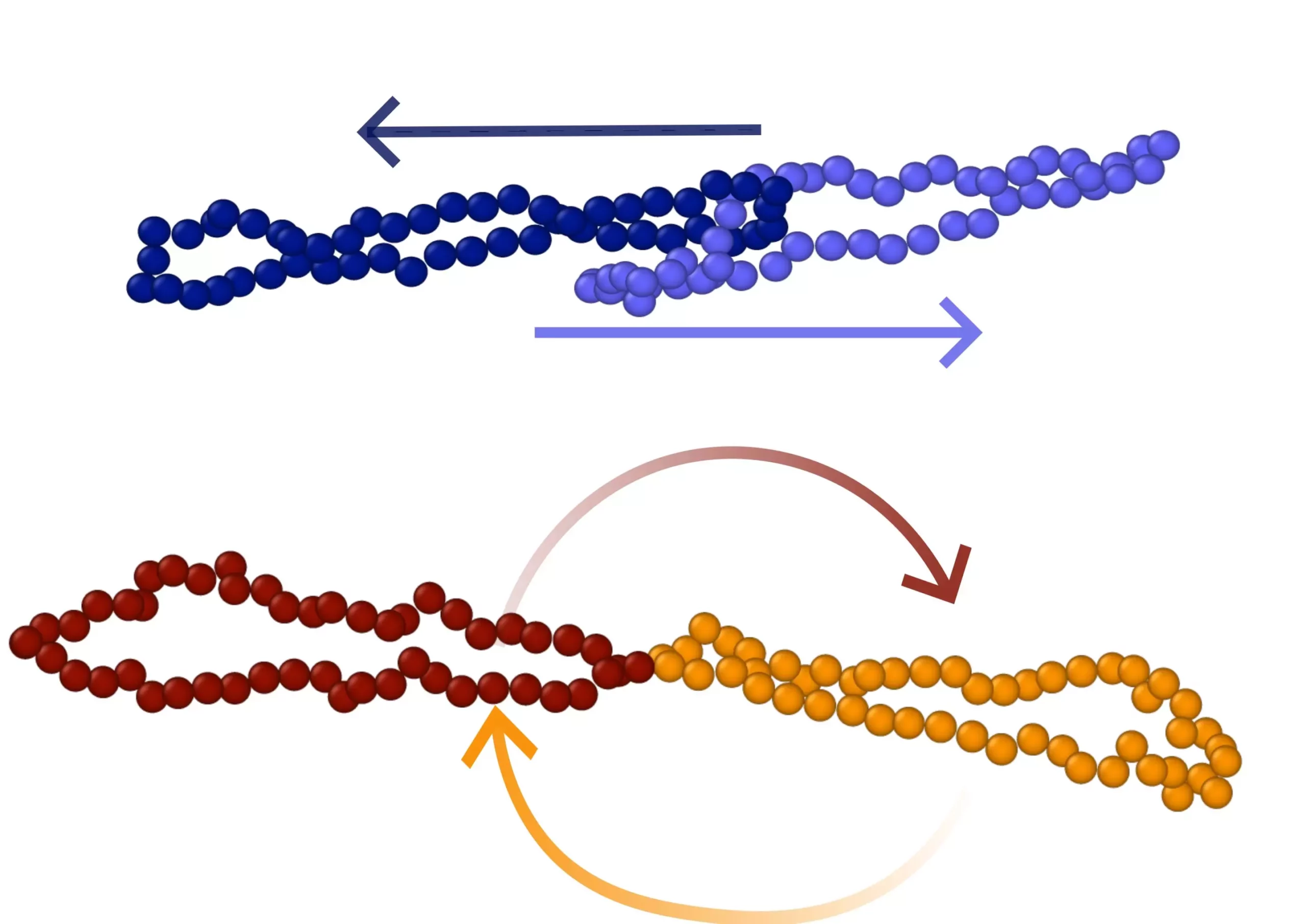Fluid shear, which involves the sliding of fluid layers under shear forces, is a critical concept in rheology, the study of how matter flows. Rheological properties such as viscosity and thixotropy play significant roles in a wide range of applications. Recent research has focused on the shear behavior of viscoelastic fluids created by introducing polymers into Newtonian fluids.
A novel approach in current research involves considering polymer topology, which refers to the spatial arrangement and structure of molecules. Ring polymers, composed of closed loops without free ends, have been the subject of recent experiments. These macromolecules exhibit unique characteristics that can influence fluid shear behavior.
In computer simulation experiments under shear, two types of connected ring pairs were studied: bonded rings (BRs) with chemical linkages, and polycatenanes (PCs) with mechanical linkages via a Hopf link. The inclusion of hydrodynamic interactions was crucial in capturing the dynamic patterns that emerged due to the interplay between hydrodynamics and topology.
The study revealed unexpected dynamic patterns in both BRs and PCs. BRs exhibited gradient-tumbling motion, while PCs maintained a fixed, stretched conformation and displayed slip-tumbling behavior. These unique modes of motion highlight the influence of polymer architecture on fluid shear behavior.
The different tumbling motions and structures of BRs and PCs have a significant impact on the mechanical properties of the solution. BRs release internal stresses through tumbling, while PCs store stresses permanently, leading to higher viscosity. This could potentially influence the shear viscosity of highly concentrated solutions or polymer melts.
The study conducted by a collaborative effort between multiple universities sheds light on the intricate relationship between polymer topology and fluid shear behavior. Further experimental and theoretical studies are necessary to explore the implications of these findings in various applications.
By critically analyzing the original article and reshaping the content into a new structure, it becomes clearer how the study of polymer topology can offer valuable insights into fluid shear behavior. The unique dynamic patterns observed in ring polymers underscore the complexity of the interplay between hydrodynamics and molecular structure. The implications of these findings extend beyond the realm of rheology and highlight the potential for innovative advancements in various fields.


Leave a Reply